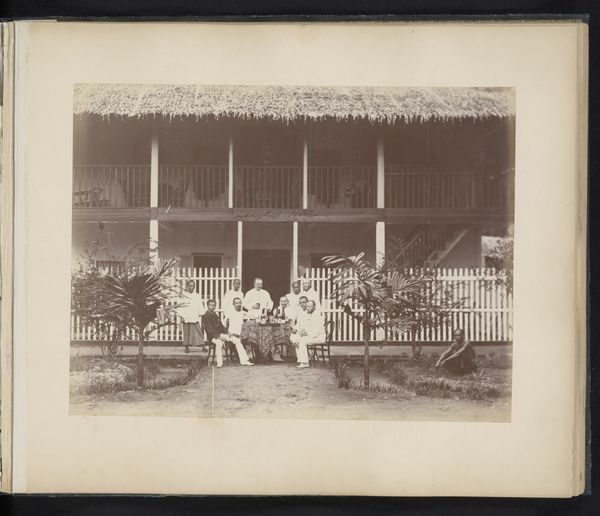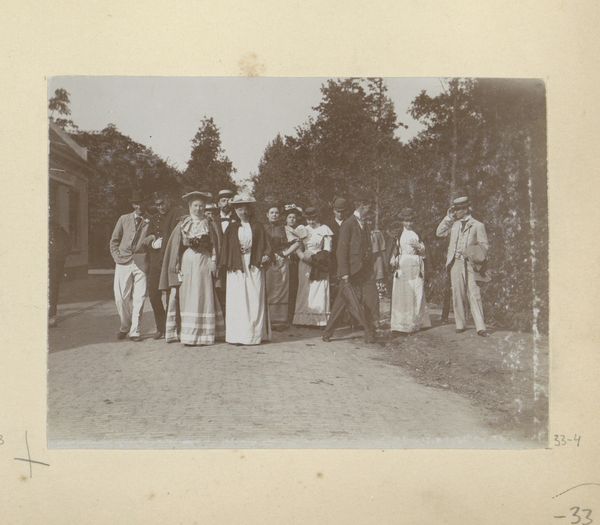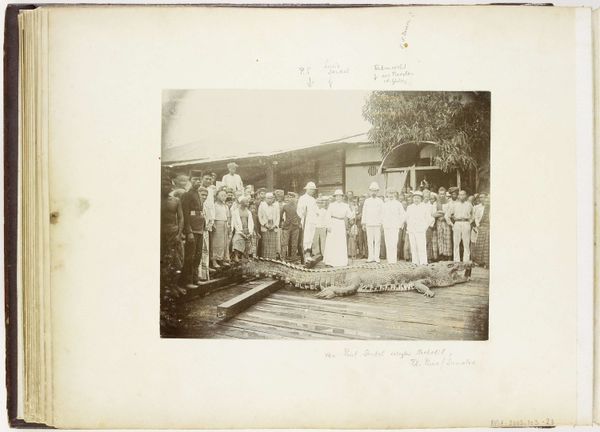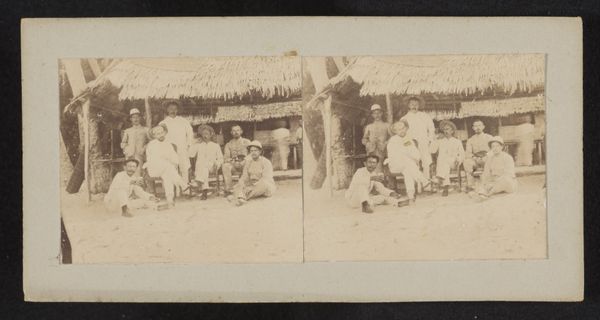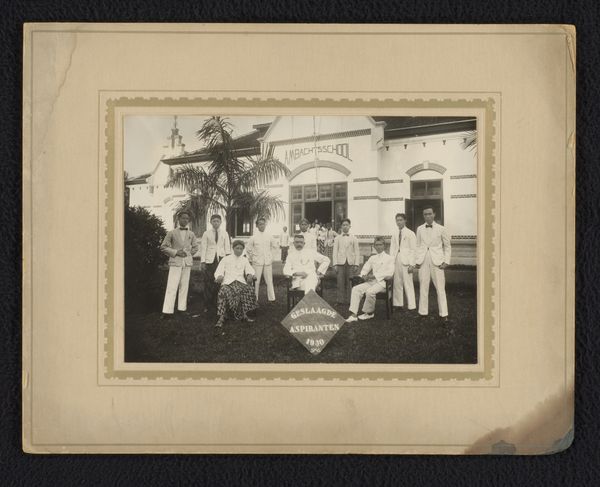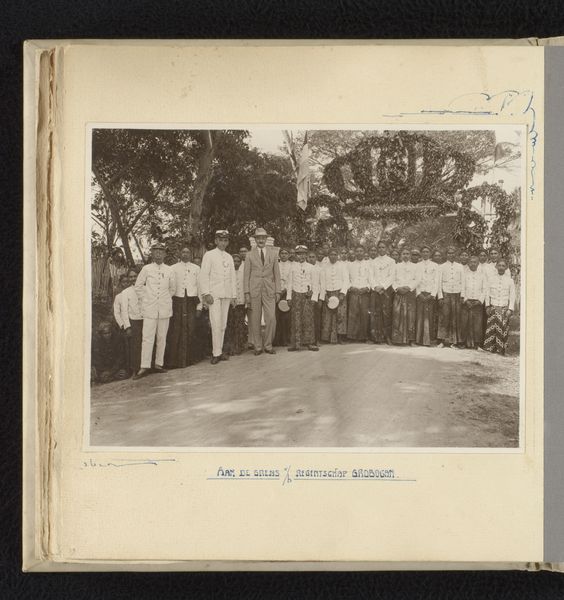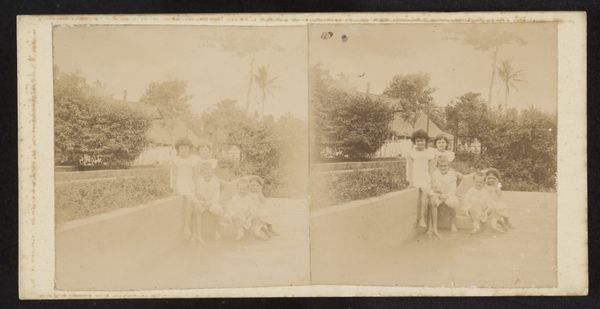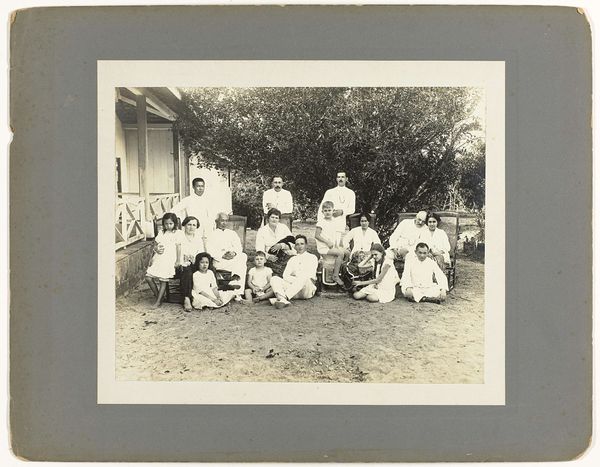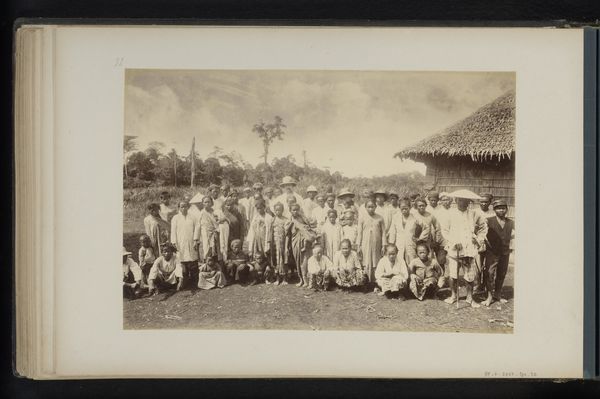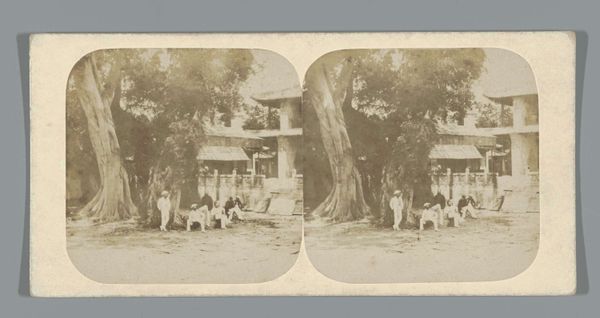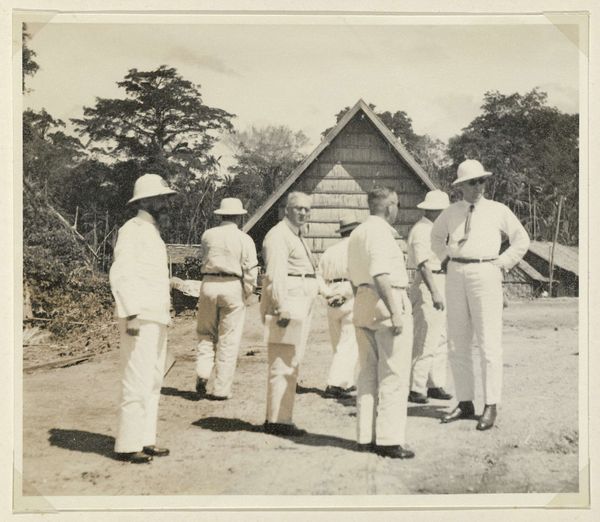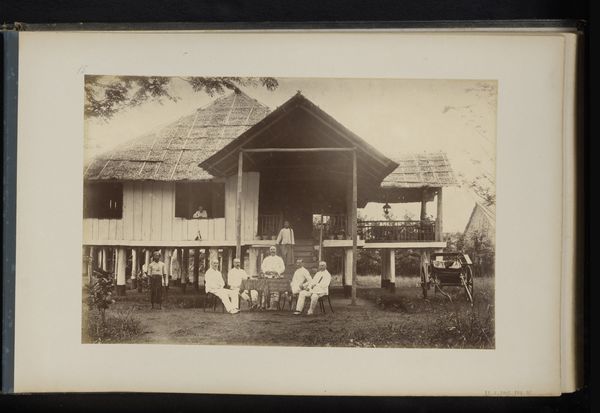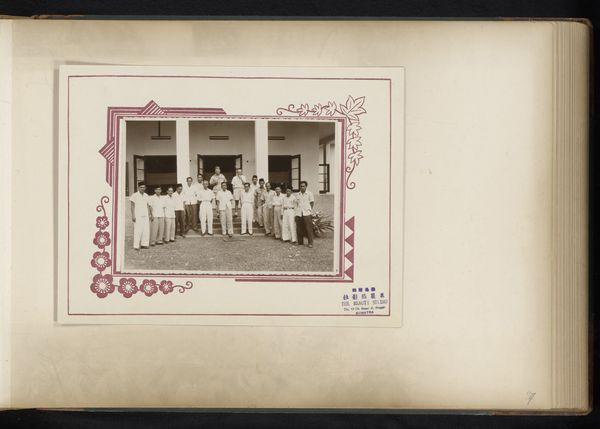
photography, gelatin-silver-print
#
portrait
#
landscape
#
photography
#
orientalism
#
gelatin-silver-print
Dimensions: height 167 mm, width 232 mm, height 250 mm, width 320 mm
Copyright: Rijks Museum: Open Domain
Editor: This photograph, "Walstransport," a gelatin silver print taken sometime between 1931 and 1937, features a group of men posing with a vehicle in what looks like a colonial setting. What I find fascinating is how the materiality of the photograph itself contributes to this historical feel, almost like a document of a bygone era. What stands out to you in this piece? Curator: I'm particularly struck by the inscription “Walstransport” emblazoned on the vehicle itself, and the way this points to a very specific mode of labor and colonial infrastructure. Consider the gelatin silver print process; the labor involved in creating the emulsion, coating the paper, the exposure, the development. These processes are fundamentally linked to the material realities of the time, a time of colonial exploitation and resource extraction. Editor: That’s a good point! It's easy to overlook the industrial processes behind even a "simple" photograph. Curator: Precisely! And look at the clothing – the light suits of the colonizers contrasting with the attire of the local workers. Clothing, itself a material, signifies power dynamics and the visible hierarchy within the colonial system. What kind of raw materials are at play, how are they harvested, who produces these garments? All things that connect this image to broader systems of making, consumption, and the imposition of culture. Editor: So, by looking at the materials and how things are made in this photo, we see the evidence of colonial power. It’s more than just the image; it’s about the process behind it. I hadn’t thought about it that way. Curator: Indeed. It compels us to ask: what resources fueled this infrastructure, whose labor constructed this machine, and what societal systems made this all possible? It opens the photograph to a range of readings about work, power, and historical impact. Editor: I'll definitely remember to look more closely at the materiality and production aspects next time.
Comments
No comments
Be the first to comment and join the conversation on the ultimate creative platform.
